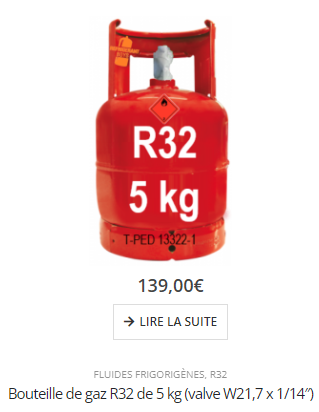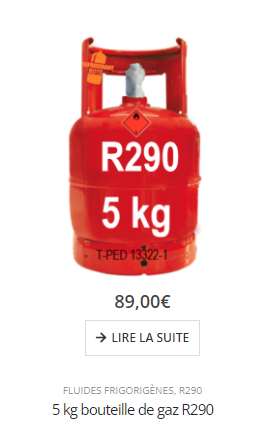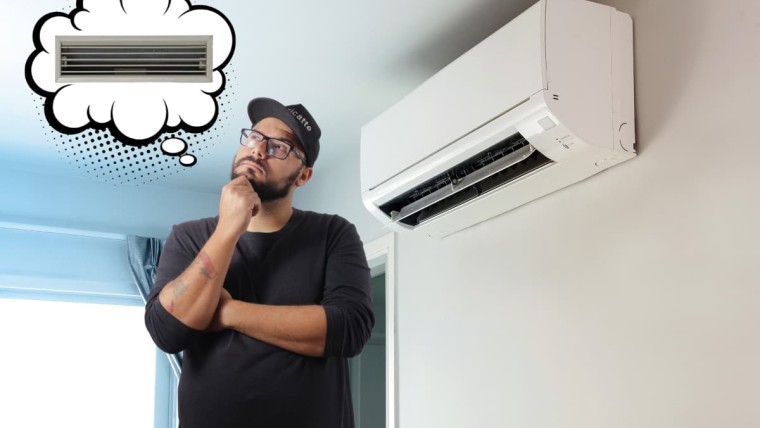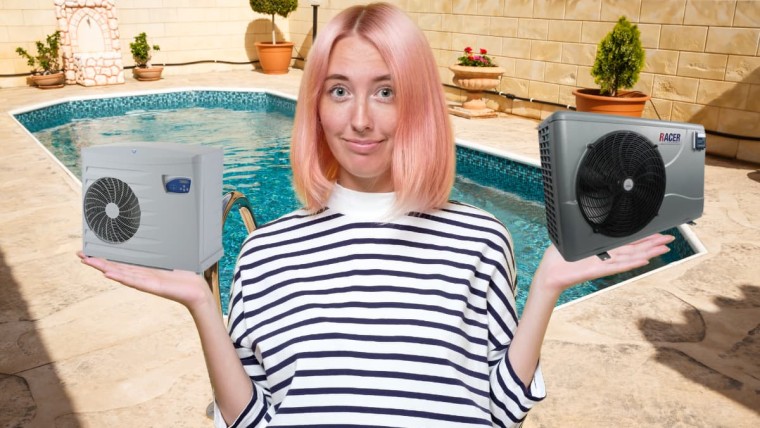At the ISH 2023 trade fair in Frankfurt, all heat pump manufacturers presented their latest models, which run on R290, a new, more environmentally-friendly refrigerant better known as propane.
After the replacement of R410A by R32In this article, we'll look at the differences between these two refrigerants, to help you in your choice of a new heat pump model.
R290 is a natural hydrocarbon
It's a simple molecule made up of carbon and hydrogen (C3H8), making it a natural hydrocarbon. Unlike HFCs, it has no impact on the ozone layer, and its GWP (global warming potential) is very low.
R32, with the formula CH2F2, contains no chlorine. Its impact on the ozone layer is also very low, but greater than that of R290.
R290 has virtually zero GWP
Propane (R290) has a global warming potential of 3 extremely low, making it a virtually greenhouse-neutral gas. It is therefore a natural choice for heat pump manufacturers.
R32 has a GWP of 675. This makes it a better choice than older fluids such as R410A or R407C.
Read also: differences between R410A and R32
R290 is more energy-efficient than R32
While R32 is excellent, enabling heat pumps to achieve COPs of between 3 and 5, R290 is a notch above, enabling COPs of between 4 and 6 if the right conditions are met.
In fact, R290 has very good thermodynamic properties, including better thermal conductivity (0.152 W/m-K) than R32 (0.084 W/m-K) and around twice the heat capacity (1.64 kJ/kg-K.), enabling it to transport heat more efficiently than R32 (0.85 kJ/kg-K).
What's more, the low-temperature performance of the two gases is pretty much the same. R32 has a boiling point of around -52°C, while R290 has a boiling point of around -42°C. While theoretically R32 has an advantage in that it can continue to evaporate above -42°C and down to -52°C, we're talking about temperatures so low as to be irrelevant: after all, we don't live in Yakutia. On the whole, at low temperatures, R290 remains at an advantage thanks to its better thermodynamic properties, which enable it to transport heat more efficiently.
R290 is highly flammable, much more so than R32
R32 is rated A2L for flammability, making it a mildly flammable fluid. With a minimum ignition energy of 100mJ, it takes a hell of a lot of energy to ignite it.
What's more, at least 14.4% of R32 in air concentration is required for combustion to occur, and the speed of flame propagation in the event of ignition is much lower than for highly flammable gases such as R290.
R290 is classified as A3, which is highly flammable. To compare with R32, its minimum ignition energy is 0.25mJ, i.e. 400 times smaller than that of R32.
What's more, it takes just 2.1% of R290 gas to initiate combustion in air, and the propagation speed of R290 is higher than that of R32.
R290 can therefore only be used when the refrigerant circuit is outside the home, which limits its use to outdoor air/water heat pumps.
Equipment compatibility problems
As the two gases have different properties, an R32 system may not be compatible with an R290 system, and vice versa. This prevents any gas replacement intervention.
For example, compressors need to be sized specifically for each gas, as there are differences in thermodynamic properties and vapour density. An R32 compressor may not be ideal for R290.
Heat exchangers must be sized to maximize heat transfer, but the two fluids have different thermal conductivities and heat capacities. A heat exchanger for R32 may not be very efficient for R290, and vice versa.
Finally, an R290 heat pump requires additional safety equipment due to the gas's high flammability. All systems that would not be necessary on a R32 heat pump.
If we were to replace R32 with R290, we wouldn't just be replacing a fluid, we'd also have to overhaul a number of internal components to ensure that everything runs smoothly, and above all put in place the necessary safety measures, given propane's high flammability. All of which makes this an operation that makes little economic sense.
The old R22 gas was more readily replaced by newer fluids such as R407 or R410A, with a few minor adjustments. Retrofitting is when you replace one gas with another and make adjustments to make it work. A R290 retrofit is virtually impossible, for safety reasons.
R290 is less expensive than R32
While R290 gas (€89 for 5kg) is less expensive than R32 (€139 for 5kg) when purchased in cylinders, this is not necessarily the case for a heat pump running on R290 compared with one running on R32. This is due to the safety measures required for R290: improved ventilation, leak detectors and specialized installation and maintenance protocols. All of which adds to the overall cost of the installed machine.


Finally, what should you choose between R32 and R290 for your outdoor air/water heat pump?
While R32 can be replaced by R290 quite advantageously, R32 remains usable under refrigerant regulations until 2030. Which makes it a sustainable candidate.
While R290 gives rise to more efficient machines and is more environmentally friendly than R32, it remains a highly flammable gas, which increases the cost of the heat pump and its installation.
Although less expensive to buy, the overall cost of an R290 heat pump can be high because of the safety measures required. The choice between R290 and R32 will therefore depend on ecological, efficiency and safety priorities. What's certain is that the vast majority of manufacturers have switched to R290, and that in a few years' time it will be the only choice. Other manufacturers, such as Stiebel Eltron have turned instead to R454C, whose very low GWP of 148 combines with lower flammability than R290.

Julien G.
Juliena mechanical engineering graduate and specialist in climate engineering since 2009, has become a writer specializing in renewable energies, with expertise in heat pumps and photovoltaic solar panels for individual housing.
See all articles by this author






